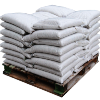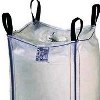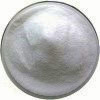| We offer Halal and Kosher Potassium Oleate manufactured in an ISO9001, ISO22000 (FSSC22000) and cGMP certified facility, Anmol Chemicals a mubygroup company involved in manufacturer of Speciality Chemicals, Pharmaceutical Excipients, etc. The group has several manufacturing facilities spread across the world, supported by toll manufacturers and representatives in UAE, Europe, USA & china. |
| The units in the group have one or more of the certifications like FDA GMP, ISO 9001, ISO 22000, HACCP, REACH, Kosher & Halal and DMF support is available. |




Potassium Oleate SDS GHS MSDS of Manufacturers

CAS Number: 143-18-0, EINECS EC Number: 320.55, Molecular Formula: CH3(CH2)7CH=CH(CH2)7COOK or C18H33KO2, Molecular Weight: 205-590-5
Potassium Oleate Specification Sheet of Suppliers
Potassium Oleate SDS GHS, Safety Data Sheet
MSDS, Material Safety Data Sheet
1. Product Identification
Product Name & Other Names: Potassium Oleate, Oleic acid potassium salt
CAS No.: 143-18-0 (also 1323-38-2)
EINECS: EC Number: 205-590-5
Molecular Weight: 320.55
Chemical Formula: C18H33KO2
Relevant uses and uses advised against (if any): Industrial use only.
2. Hazards Identification
GHS, Globally Harmonized System Classification in accordance with 29 CFR 1910
Classification according to Regulation (EC) No 1272/2008
Skin corrosion/irritation Category 2, H315
Serious eye damage/eye irritation Category 2A, H319
Specific target organ toxicity, single exposure; Respiratory tract irritation Category 3, H335
Acute aquatic toxicity Category 1, H400
GHS Label Elements  Marine Pollutant |
GHS Label Elements |
Signal Words: Warning
Hazard statements:
H315: Causes skin irritation.
H319: Causes serious eye irritation.
H335: May cause respiratory irritation.
H400: Very Toxic to aquatic life.
Precautionary statements:
P260: Do not breathe dust/fume/gas/mist/vapors/spray.
P262: Do not get in eyes, on skin, or on clothing.
P264 Wash thoroughly after handling.
P273: Avoid release to the environment.
P280: Wear protective gloves/protective clothing/eye protection/face protection.
P314: Get medical advice/attention if you feel unwell.
P302+P352: IF ON SKIN: Wash with plenty of soap and water.
P305+P351+P338: IF IN EYES: Rinse cautiously with water for several minutes. Remove contact lenses, if present and easy to do. Continue rinsing.
P362: Take off contaminated clothing and wash before reuse.
P332+P313: If skin irritation occurs: Get medical advice/attention.
P337+P313: If eye irritation persists: Get medical advice/ attention.
P391: Collect spillage.
P405: Store locked up.
P501: Dispose of contents/container in accordance with local/regional/national/international regulation.
Classification according to EU Directives 67/548/EEC or 1999/45/EC:
Hazard Symbols:
Xi Irritant
N Dangerous for the environment
Risk Phrases:
R36/37/38 - Irritating to eyes, respiratory system and skin
R51 Toxic to aquatic organisms.
3. Composition/Information on Ingredients
Synonyms: Potassium Oleate, Oleic acid potassium salt
CAS No.: 143-18-0 (also 1323-38-2)
EINECS: EC Number: 205-590-5
Percent: 30% - 100% (Dilution is with water).
4. First Aid Measures
Always seek medical attention after first aid measures are provided.
Inhalation: Remove to fresh air. If not breathing, give artificial respiration. If breathing is difficult, give oxygen. Get medical attention.
Ingestion: Never give anything by mouth to an unconscious person. Get medical attention.
Skin Contact: Wipe off excess material from skin then immediately flush skin with plenty of water for at least 15 minutes. Remove contaminated clothing and shoes. Get medical attention. Wash clothing before reuse. Thoroughly clean shoes before reuse.
Eye Contact: Immediately flush eyes with plenty of water for at least 15 minutes, lifting lower and upper eyelids occasionally. Get medical attention immediately.
5. Fire Fighting Measures
Flammability of the Product: May be combustible at high temperature..
Products of Combustion: Potassium oxide, Carbon dioxide, Carbon monoxide, fumes.
Fire Extinguishing Media: Use means suitable for extinguishing surrounding fire. Use water spray, alcohol-resistant foam, dry chemical or carbon dioxide.
Special Information: In the event of a fire, wear full protective clothing and NIOSH-approved self-contained breathing apparatus with full face piece operated in the pressure demand or other positive pressure mode. At high temperatures or when moistened under fire conditions, it may produce toxic or irritating fumes. On decomposition it may emit hydrogen chloride. Containers may explode on heating. Fire-extinguishing work is done from the windward and the suitable fire-extinguishing method according to the surrounding situation is used. Uninvolved persons should evacuate to a safe place.
6. Accidental Release Measures
Personal precautions, protective equipment and emergency procedures: Avoid breathing dust/fumes/gas/mist/vapors/spray. Use individual protective equipment (waterproof boots, suitable protective clothing, safety glasses, etc). Restrict unprotected personnel from the area. Prevent any contact with hot surfaces. Do not approach facing the wind. Do not touch the spilled material.
Environmental precautions: Do not let the product enter drains, soil or water sources.
Methods and materials used for containment Cleanup procedures and Storage:
Small Spill: Avoid dust/mist formation. Avoid breathing dust/mist. Ensure adequate ventilation. Use appropriate tools to put the spilled solid in a convenient waste disposal container.
Large Spill: Contain spilled material. Avoid touching the spilled material. Do not let the product enter drains. Use a shovel to put the material into a convenient waste disposal container.
7. Handling and Storage
Precautions for safe handling: Apply according to good manufacturing and industrial hygiene practices. Ensure proper ventilation. Provide appropriate exhaust ventilation at places where dust is formed. Wash thoroughly after handling. Do not drink, eat or smoke while handling. Avoid contact with skin, eyes and clothing. Minimize dust generation. Avoid breathing dust/fumes/gas/mist/vapors/spray. Avoid contact with eyes, skin, and clothing. Keep container tightly closed. Avoid ingestion and inhalation. Use individual protective equipment (waterproof boots, suitable protective clothing, safety glasses, etc). Prevent any contact with hot surfaces.
Conditions for safe storage, including any incompatibilities: Store in cool, dry and ventilated area away from heat sources and protected from sunlight in tightly closed original container. Keep air contact to a minimum. Do not leave the material container open. Store protected from heat, sparks and ignition sources and incompatible materials. Do not store with incompatible materials like strong oxidizing agents, reducing agents.
8. Exposure Controls/Personal Protection
Airborne Exposure Limits: Not Established.
Ventilation System: A system of local and/or general exhaust is recommended to keep employee exposures as low as possible. Local exhaust ventilation is generally preferred because it can control the emissions of the contaminant at its source, preventing dispersion of it into the general work area.
Personal Respirators (NIOSH Approved): For conditions of use where exposure to dust or mist is apparent and engineering controls are not feasible, a particulate respirator may be worn.
Skin Protection: Wear protective gloves and clean body-covering clothing.
Eye Protection: Use chemical safety goggles and/or full face shield where dusting or splashing of solutions is possible.
Other Control Measures: Maintain good housekeeping in work area. Maintain eye wash fountain and quick-drench facilities in work area.
9. Physical and Chemical Properties
Appearance: Viscous liquid or Clear Brown Liquid to Clear Amber Yellow Liquid paste, depending on percentage of active matter or or beige powder depending on dilution.
Odor: Soap odor.
Odor threshold: Not available.
pH: 8 to 11.
Relative density: Varies with assay.
Melting point/freezing point: Not available.
Boiling Point: >100C
Flash Point: >100C
Auto-ignition temperature: Not available.
Decomposition temperature: Not available.
Upper/lower flammability or explosive limits: No data found.
Vapor pressure: No data found.
Vapor density: No data found.
Evaporation rate: No data found.
Flammability (solid, gas): No data found.
Partition coefficient: n-octanol/water: No data found.
Solubility: Soluble in water.
Viscosity: No data found.
10. Stability and Reactivity
Stability: Stable under ordinary conditions of use and storage.
Hazardous Decomposition Products: It emits Potassium oxide, Carbon dioxide, Carbon monoxide & Fumes.
Hazardous Polymerization: Will not occur.
Incompatibilities: Strong oxidizing agents, reducing agents.
Conditions to Avoid: Incompatibles and heat.
11. Toxicological Information
Toxicity data
LD50 Oral - Rat - > 5,000 mg/kg (Potassium oleate)
LD50 Dermal - Rat - > 2,000 mg/kg (Potassium oleate)
Carcinogenic Effects: No component of this product at levels greater than 0.1% is identified as carcinogenic by IARC, ACGIH, or OSHA.
Mutagenic Effects: No data found.
Teratogenic Effects: No data found.
Developmental Toxicity: No data found.
12. Ecological Information
Potassium salts of fatty acids are known to be toxic to aquatic invertebrates.
Toxicity to fish: LC50 - Oryzias latipes - 5,3 mg/l - 48 h
Toxicity to daphnia and other aquatic invertebrates: EC50 - Daphnia magna (Water flea) - 0,57 mg/l - 48 h.
Persistence and Degradability: Unlikely to persist due to water solubility.
Mobility: Likely to be mobile due to water solubility.
Bioaccumulation/ Accumulation: No information available.
Results of PBT and vPvB assessment:This substance/mixture contains no components considered to be either persistent, bioaccumulative and toxic (PBT), or very persistent and very bioaccumulative (vPvB) at levels of 0.1% or higher.
13. Disposal Considerations
Whatever cannot be saved for recovery or recycling should be managed in an appropriate and approved waste disposal facility. Processing, use or contamination of this product may change the waste management options. State and local disposal regulations may differ from federal disposal regulations. Dispose of container and unused contents in accordance with federal, state and local requirements. Follow all pollutin control rules.
14. Transport Information
DOT USA, TDG Canada & ADR/RID Europe:
UN number: 3077
UN proper shipping name: ENVIRONMENTALLY HAZARDOUS SUBSTANCE, SOLID, N.O.S. (Potassium oleate)
Transport hazard class(es): 9
Packaging group: III
IMDG/IMO & IATA
UN number: 3077
UN proper shipping name: ENVIRONMENTALLY HAZARDOUS SUBSTANCE, SOLID, N.O.S. (2,6-di-tert-Butyl-p-cresol)
Transport hazard class(es): 9
Packaging group: III
15. Regulatory Information
USA:
SARA 302 Components : Not listed.
SARA 311/312 Hazards: See section 2.
California Proposition 65: Not listed.
Section 16 - Additional Information
European Labeling in Accordance with EC Directives:
H315: Causes skin irritation.
H319: Causes serious eye irritation.
H335: May cause respiratory irritation.
H400: Very Toxic to aquatic life.
Disclaimer:
**************************
Our company provides this MSDS sheet in good faith but makes no representation as to its comprehensiveness or accuracy. This SDS sheet is intended only as a guide to the appropriate precautionary handling of the material by a properly trained person using this product. Individuals receiving the information must exercise their independent judgment and do further search in determining its appropriateness for a particular purpose. In no case shall our company be liable to loss or damages by the product user.
**************************
Potassium Oleate Manufacturers
Anmol Chemicals
S-8, SARIFA MANSION, 2ND FLANK ROAD, CHINCHBUNDER, MUMBAI 400009, INDIA
TEL: (OFFICE) 91-22-23770100, 23726950, 23774610, 23723564. FAX: 91-22-23728264
e-mail: anmolc@mtnl.net.in

Exports to USA, Canada, UAE, Dubai, South Africa, Tanzania, Kenya, Nigeria, Egypt, Uganda, Turkey, Mexico, Brazil, Chile, Argentina, Europe Netherlands, Italy, Spain, Germany, Portugal, France, Malaysia, Indonesia, Thailand, Korea, Japan, Vietnam, Norway, etc.
Copyright and Usual Disclaimer is Applicable January 27, 2022
If you want your work to be done well, go to a busy man.
The other one has no time.
